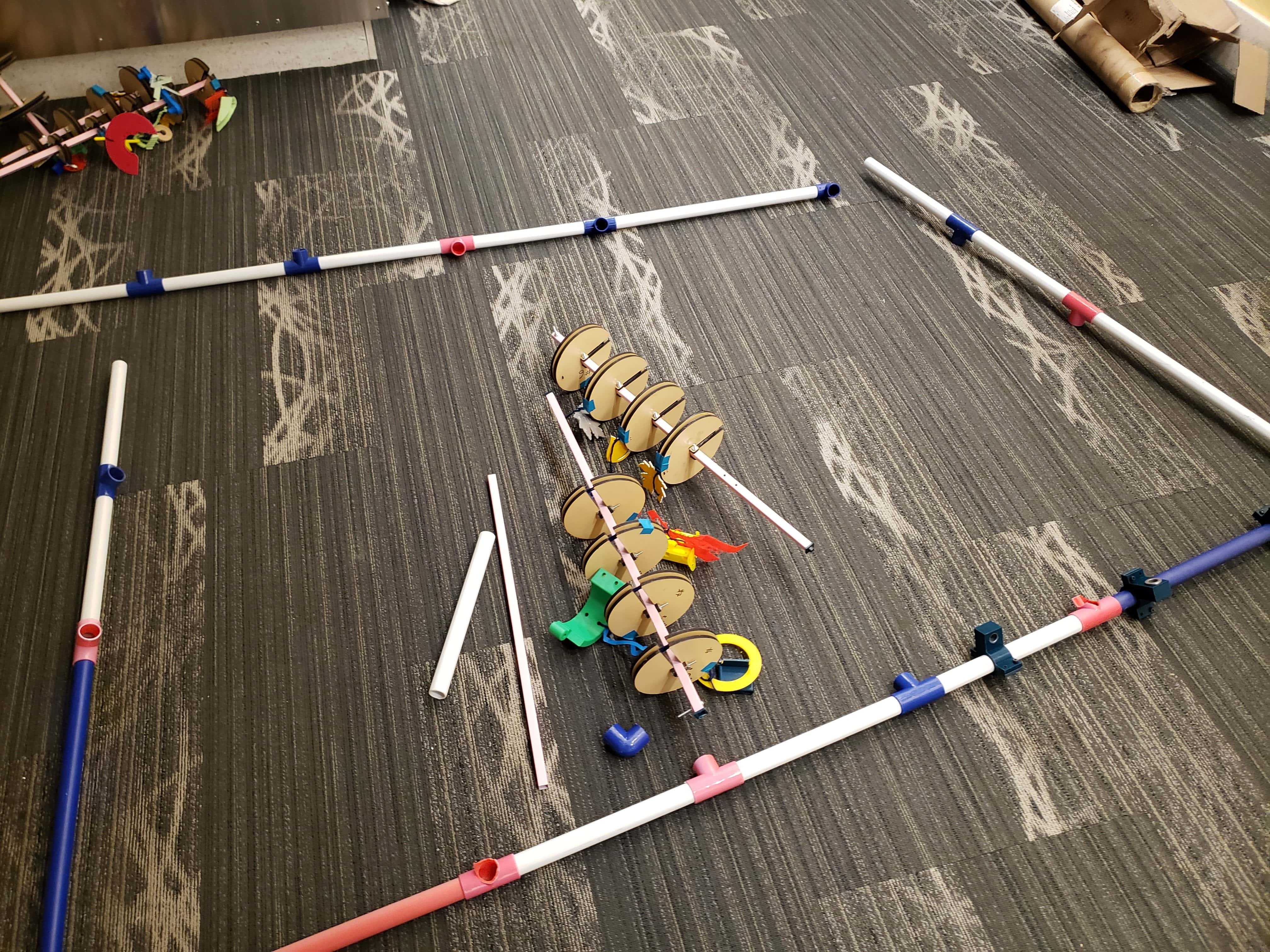Goals
Mechanical Goals
- Prove concept at scale with found materials
- Purchase requisite electrical components
- Complete initial frame design
- Identify potential failure modes
Software Goals
- Implement software angle tracking
- Initial integration testing and tuning
- Complete tests for software motor encoders
Deliverable
At the end of Sprint 2, we had the start to our final piece, but it was clear some components weren't going to work. Our frame was made of a mix of PVC and wood, and our 3 shafts were made with two interconnected shafts of metal we had scavenged. Unfortunately, these components weren't strong enough for what we needed - the PVC bent under the weight of the axles, and the 3D printed connector holding the shafts together bent under the weight of the pulleys. Worse, the software side positional tracking for motors wasn't accurate at all, and we were reliant on manual stops to prevent the pulleys from winding too far up. We would have to tackle these obstacles in our last sprint.
